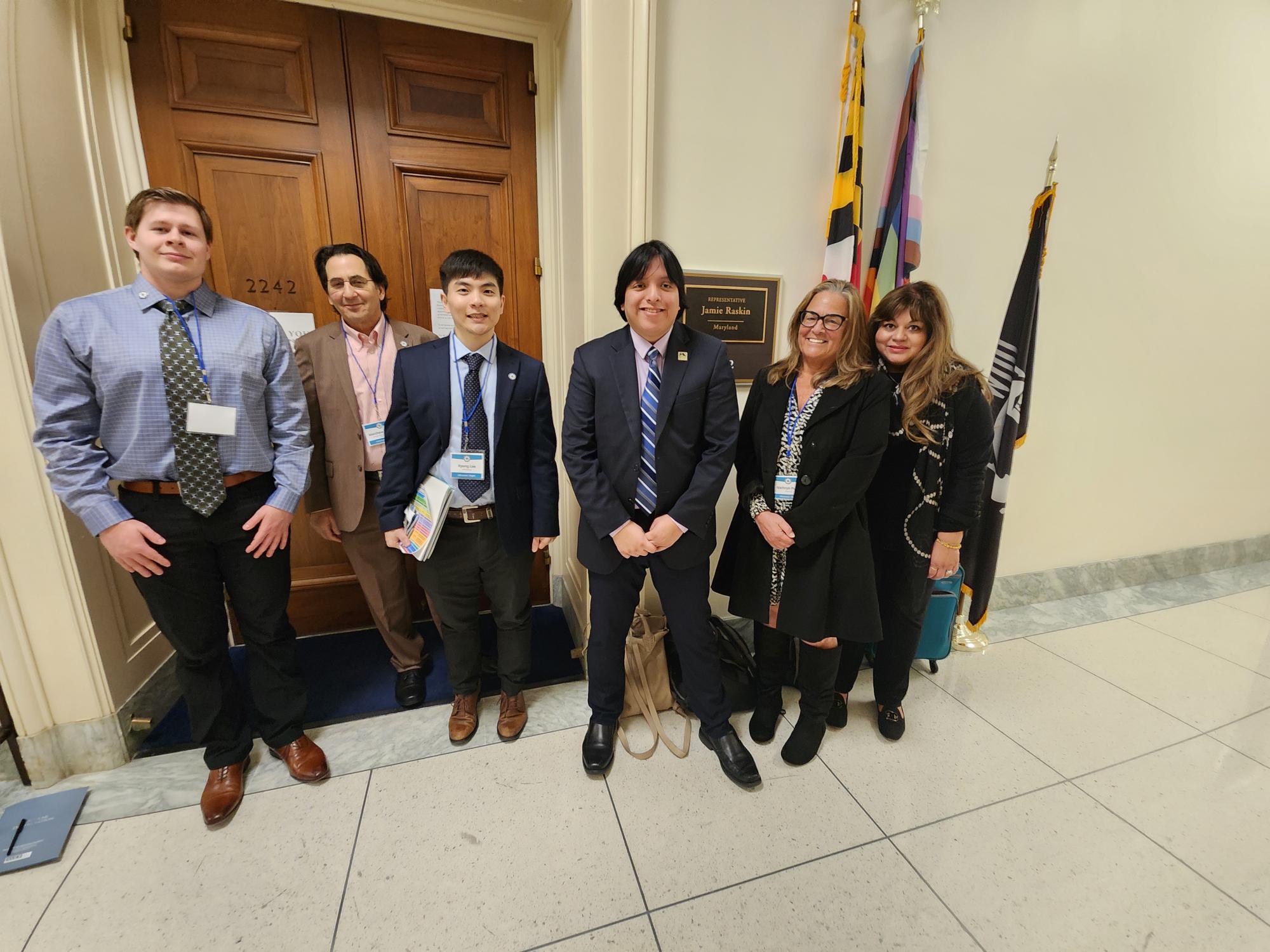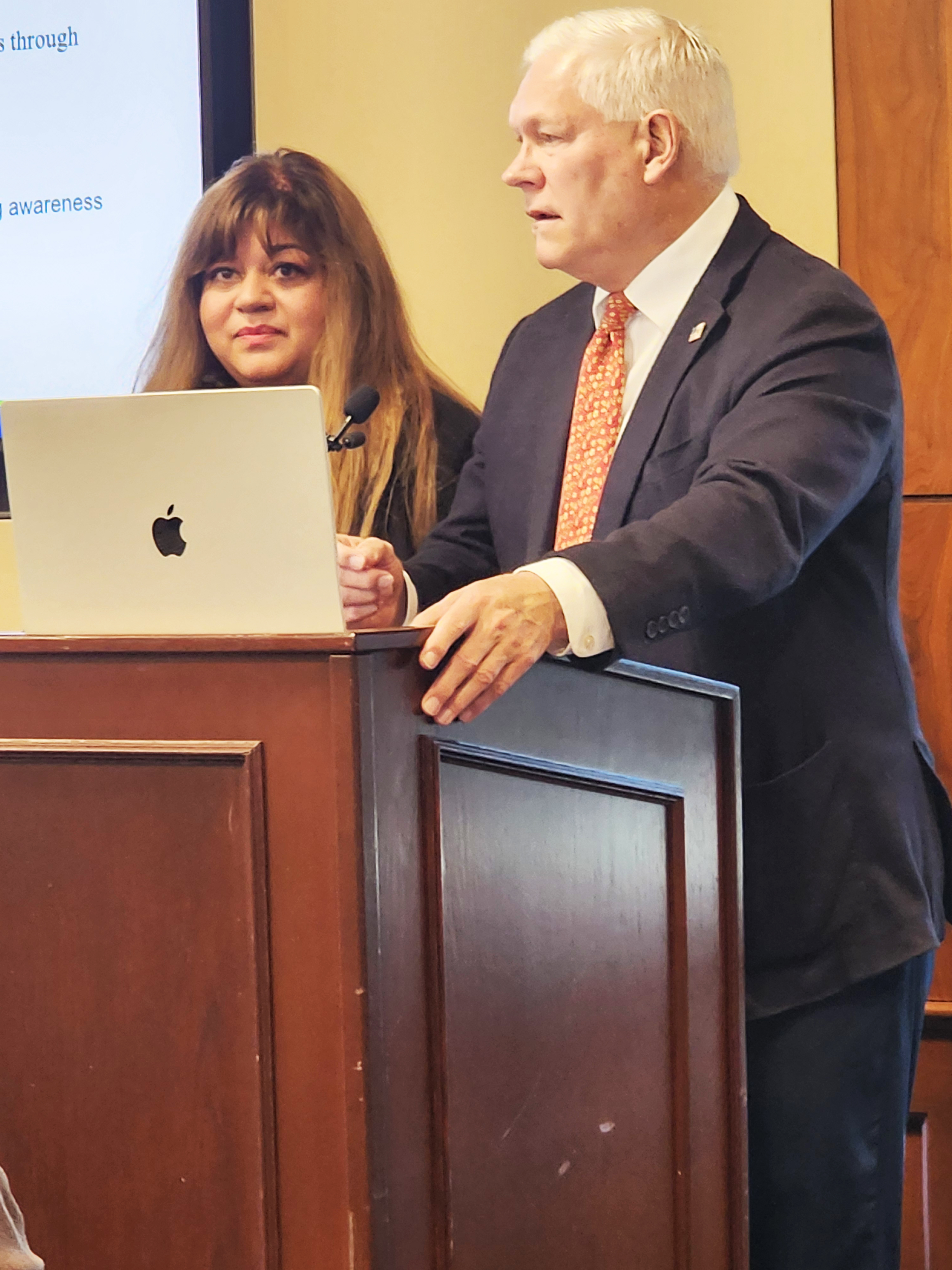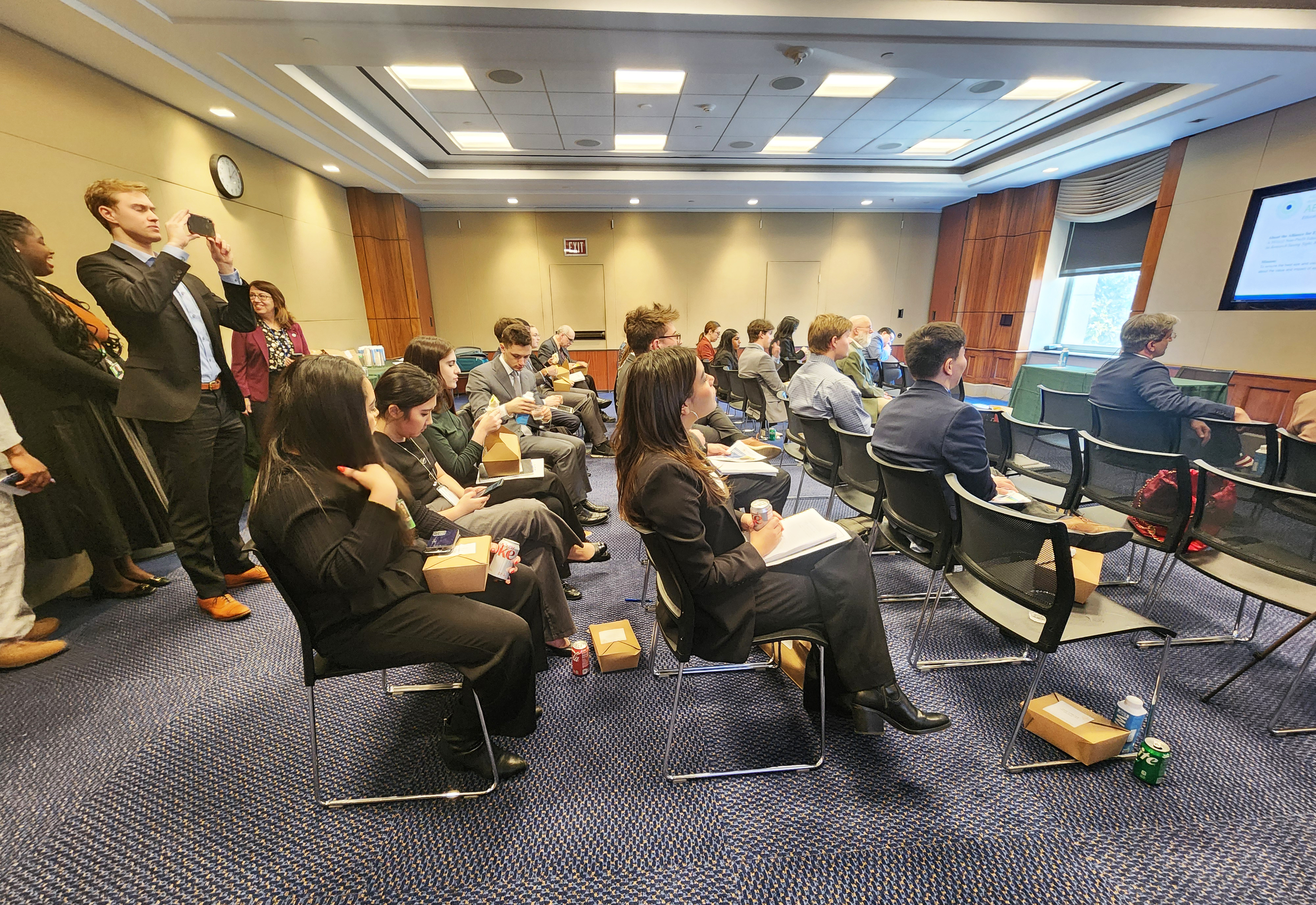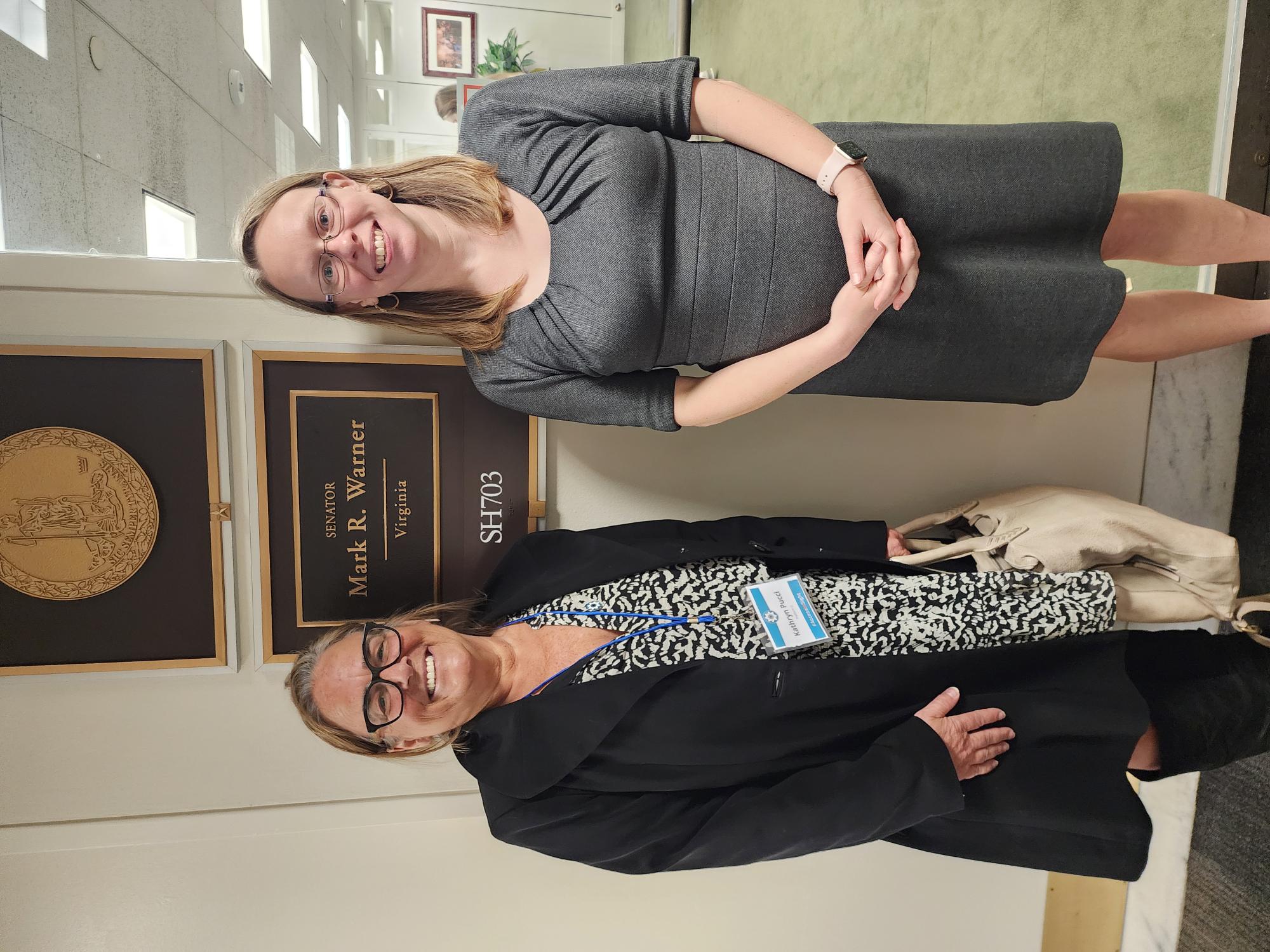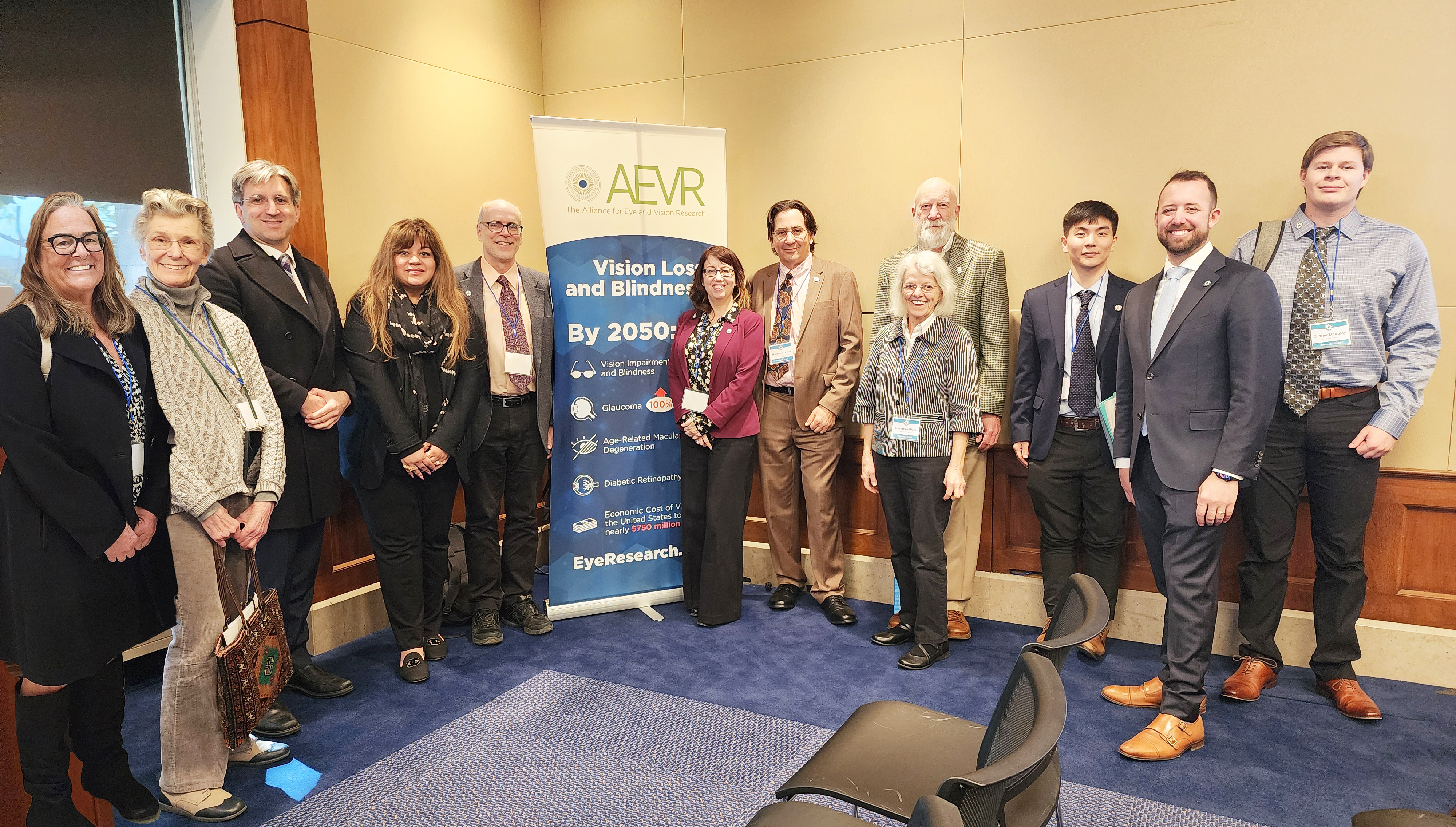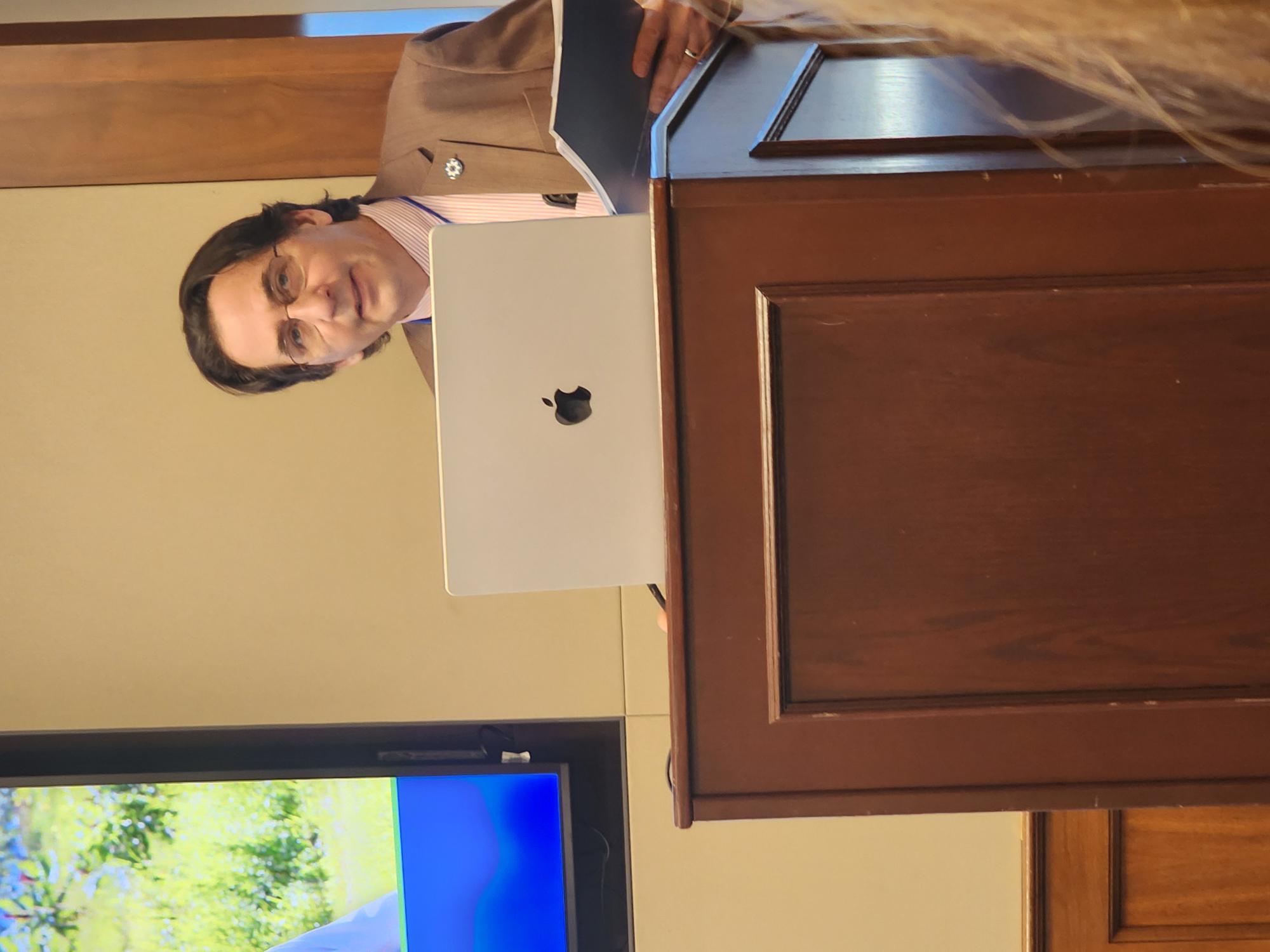AEVR Holds AMD Congressional Briefing and NAEVR Conducts Advocacy Day on the Hill
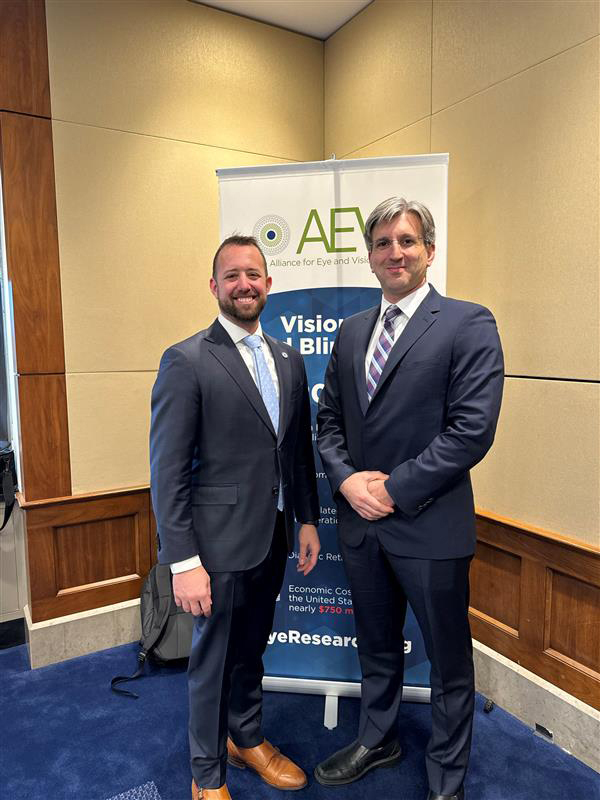 Pictured Left to Right: Congressional Briefing Speakers - Dan Ignaszewski, Executive Director, NAEVR/AEVR and Amir Kashani, Associate Professor of Ophthalmology, Wilmer Eye Institute, Johns Hopkins Medicine |
In observance of February as the annual Age-related Macular Degeneration (AMD) and Low Vision Awareness Month, the Alliance for Eye and vision Research (AEVR) partnered with the American Macular Degeneration Foundation (AMDF) to host Access in Sight – AMD Advocacy and Action Week, which took place the last week of February. The groundbreaking collaboration featured an impactful Congressional Briefing and a “Day on the Hill” as AEVR and AMDF united advocates from across the country to meet with Congressional offices.
AMD is a degenerative condition of the light sensing cells (retina) and the retinal pigment epithelium (RPE) in the eye often affecting central vision. This type of vision loss leads to serious challenges across all aspects of daily living, compromising not only independence but emotional and mental well-being. Furthermore, AMD is a leading cause of vision loss in the Western world, In the United States alone, 20 million Americans are living with AMD with that figure expected to double to 40 million by 2050. As AMD numbers continue to rise across the nation, the briefing focused on the importance of investing in research to identify potential advancements in treatment and cures.
Congressman Pete Sessions (R-TX-17), a huge proponent of accelerating and advancing vision research, joined the AMD Congressional Briefing to declare, “There are [AMD treatments and medications] answers within NIH, FDA, or other organizations that we need to move more rapidly if they have gone through phases one, two, three and we know it’s safe and we know it works.” Congressman Sessions is an avid supporter of the National Eye Institute (NEI) and sparked the 2017 3D Retina Organoid Challenge, a prize competition to develop systems for making tissues that closely resemble the eye’s light-sensing retina.
NEI-funded research plays a pivotal role in establishing the groundwork for comprehending the fundamental cellular processes linked to vision loss in AMD. This research is instrumental in unraveling the intricate mechanisms and events that contribute to the development and progression of AMD, thereby laying the foundation for innovative approaches to prevent, treat, and manage this vision-threatening condition.
“Many factors contribute to the prevalence of AMD, including smoking, high blood pressure, high cholesterol, cardiovascular disease, obesity, light exposure, and poor diet,” offered speaker Amir Kashani, MD PhD, Professor of Ophthalmology at Johns Hopkins University’s Wilmer Eye Institute. “Clinical trials (AREDS) have provided a clinical staging system by which we can classify patients even before they have symptoms.” Dr. Kashani highlighted the advancements in treatment of AMD throughout his presentation and emphasized progress happening from the NEI-funded research with compliment inhibitors to treat advanced stages of “dry” AMD which for the first time saw FDA approval of new therapies in 2023.
AEVR and AMDF hosted the briefing in partnership with Research to Prevent Blindness, the Association for Research in Vision and Ophthalmology, as well as industry partners, Apellis, and Genentech—all of which recognize the importance and profound impact of vision research.
As a scientific advisor to Congressman Sessions, former Associate Professor at Harvard Medical School, Neena Haider, PhD, provided brief remarks highlighting how research for new treatments to address AMD are advanced from NEI-funded projects and then acquired by industry to further develop and bring innovative therapies and medications to market.
During the AMD briefing, poignant narratives advocates shared as a call to action for lawmakers to prioritize initiatives that can enhance the lives of AMD patients by shedding light on their personal struggles as they navigate the challenges of vision loss and its enduring impact on their lives. Their stories highlighted the importance of increased awareness, research funding, and improved healthcare and accessibility for those affected by AMD.
AEVR and AMDF also partnered with VisionAid to offer a mixed-reality experience for briefing participants to simulate the perspective of individuals with AMD. Utilizing VisionAid’s eye disease simulator, attendees gained insights into various stages of AMD vision loss.
In addition to the AEVR Congressional Briefing, the National Alliance for Eye and Vision Research (NAEVR) trained AMD patient advocates to effectively share their stories and ask for Congress’ support on policy issues that can improve their lives. Advocates joined forces and rallied to meet with Congressional staff to share their experiences. Their unified efforts aimed at advocating for increased research funding, endorsing the Vision Health Initiative by the CDC, and supporting legislative measures such as accessible travel solutions and coverage of vision rehabilitation and devices under Medicare and Medicaid for the visually impaired. This collaborative advocacy underscores a shared commitment to advancing vision health initiatives and policy changes at the national level.
AEVR and NAEVR, which are comprised of nearly 50 organizations spanning professional, patient, consumer, and industry sectors dedicated to eye and vision research, aims to champion the delivery of top-notch eye and vision care for all Americans. Our advocacy and public education initiatives focus on eye and vision research sponsored by key federal agencies, including the NEI and the Department of Defense Vision Research Program. Together, AMDF and NAEVR are poised to elevate the discourse on eye health and drive positive change on Capitol Hill with a public call-to-action to fund vision research and bring attention to policymakers and the public on issues that affect the daily lives of people with vision loss caused by AMD.
Join forces to urge Congress for improved access for every American affected by AMD and low vision. Advocacy can make a significant difference in enhancing support and resources for those dealing with this condition.
